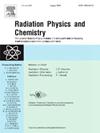氧化铅和沸石填料的协同效应显著提高硬质聚氨酯泡沫复合材料的辐射屏蔽效率、隔热性能和抗压强度
IF 2.8
3区 物理与天体物理
Q3 CHEMISTRY, PHYSICAL
引用次数: 0
摘要
随着当今世界核技术应用的增加,开发辐射屏蔽材料是保护人类和环境的关键所在。有鉴于此,研究人员采用一缩自由上升法制造了氧化铅/沸石填充硬质聚氨酯泡沫,并通过 ATR-FTIR、SEM-EDS、TGA 等先进表征技术以及热导率、通用机械和辐射屏蔽测试对其性能进行了研究。根据填料含量的变化,对样品的特性进行了详细评估。ATR-FTIR 分析表明,RPUF 基质与填料形成二次化学键,表现出良好的兼容性。此外,扫描电镜分析表明,由于填料颗粒的协同催化作用,低氧化铅/高岭土填料含量的样品表现出相当均匀和规则的细胞形态,呈各向异性的椭圆形。TGA 测量表明,与纯 RPUF 相比,在 RPUF 中加入填料会降低泡沫的交联密度,从而使样品的性能变差。由于闭孔数量大幅增加以及孔内存在更多不流动的二氧化碳气体,含有填料的泡沫复合材料的隔热性能也得到了显著改善(约 25%)。此外,在 RPUF 基质中大量添加填料可提高 RPUF 基质的弯矩和刚度,从而促进整体应力分散,使泡沫的抗压强度提高了近 15%。根据线性和质量衰减系数结果,随着氧化铅/高岭土含量的增加,泡沫复合材料显示出优异的 X 射线辐射屏蔽性能,这归功于密度的增加和高原子序数原子的存在。此外,在低光子能级下,对 X 射线辐射的屏蔽效果更好,反之亦然。本文章由计算机程序翻译,如有差异,请以英文原文为准。
Remarkable improvement in radiation shielding efficiency, thermal insulation performance and compressive strength of rigid polyurethane foam composites by synergetic effect of PbO and colemanite fillers
Developing radiation shielding materials is a critical phenomenon for protecting people and the environment with the increment in usage of nuclear technology in today's world. With this sense, PbO/colemanite-filled rigid polyurethane foams were fabricated by one-shut free rise method, and their performances were investigated via the advanced characterization techniques such as ATR-FTIR, SEM-EDS, TGA as well as thermal conductivity, universal mechanical and radiation shielding tests. The characteristic properties of the samples were evaluated in detail depending on the variation in the filler contents. The ATR-FTIR analysis illustrated that RPUF matrices exhibited good compatibility with the fillers by forming the secondary chemical bonds. Furthermore, SEM analysis revealed that the samples with low PbO/colemanite fillers exhibited fairly uniform and regular cellular morphology with anisotropic elliptical apparition thanks to synergetic catalytic effect of the filler particles, whereas, at high content, some local distortions with slightly chaotic appearance were observed accompanied by viewing the little ruptures and bursts in cell face and collapsed in cell plateau borders. TGA measurement indicated that the inclusion of the fillers into RPUF got worse the samples with comparison of neat RPUF due to the reduction in crosslinking density of the foam. Remarkable improvement (about 25 %) was also obtained in thermal insulation performance at the foam composites containing the fillers due to highly augmentation in number of closed cells and presence of more immobile CO2 gas inside the cells. Furthermore, high inclusion of the fillers in RPUF matrix improved compressive strength of the foams by nearly 15 % by enhancing the bending moment and rigidity of RPUF matrices via contributing to the overall stress dispersion. According to linear and mass attenuation coefficients results, the foam composites displayed excellent X-ray radiation shielding performance with increasing of PbO/colemanite content thanks to the density increment and presence of the atoms with high atomic number. Furthermore, at low photon energy levels, better shielding against X-ray radiation was obtained, while vice versa at high energy levels.
求助全文
通过发布文献求助,成功后即可免费获取论文全文。
去求助
来源期刊

Radiation Physics and Chemistry
化学-核科学技术
CiteScore
5.60
自引率
17.20%
发文量
574
审稿时长
12 weeks
期刊介绍:
Radiation Physics and Chemistry is a multidisciplinary journal that provides a medium for publication of substantial and original papers, reviews, and short communications which focus on research and developments involving ionizing radiation in radiation physics, radiation chemistry and radiation processing.
The journal aims to publish papers with significance to an international audience, containing substantial novelty and scientific impact. The Editors reserve the rights to reject, with or without external review, papers that do not meet these criteria. This could include papers that are very similar to previous publications, only with changed target substrates, employed materials, analyzed sites and experimental methods, report results without presenting new insights and/or hypothesis testing, or do not focus on the radiation effects.
 求助内容:
求助内容: 应助结果提醒方式:
应助结果提醒方式:


